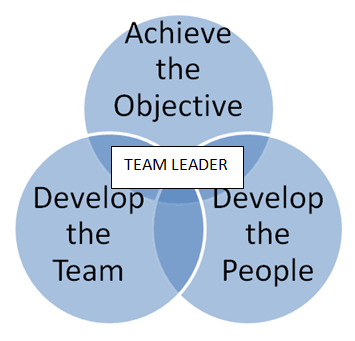Question
1. What does a team leader do? LEADER Responsibilities See Venn Diagram above: Evaluation Rating 1-10 1 = Extremely Effective 10 = Not Effective L
1. What does a team leader do?

| LEADER Responsibilities | See Venn Diagram above: | Evaluation Rating 1-10 1 = Extremely Effective 10 = Not Effective |
| L ead When Necessary --Staying flexible in your leadership style --Leading when the team gets stuck --Adapting your style of leadership based on the needs of the situation | Achieve the Objective |
|
| E valuate and Intervene as Needed --Stepping back frequently to monitor team performance --Organizing logistics, lobbying for resources, communicating to the organization about the team?s activities, remove obstacles from team?s path --Intervening to protect the team and its resources | Achieve the Objective |
|
| A ppreciate Team Members --Providing positive feedback ? builds morale and cohesiveness --Balancing developmental and positive feedback | Develop the People |
|
| D evelop Individuals by Coaching/Guiding --Coaching/guiding members of the team (helping them understand themselves and their role/response/interaction with the team members --Creating dialogue using open-ended questions | Develop the People |
|
| E ngage the Team --Introducing team-building techniques and activities to the team --Being aware of the group dynamics and the stages in team development | Build the Team |
|
| R einforce Results --Celebrating successes --Including rewards and recognition for exemplary team performance --Stopping to recognize results | Build the Team |
|
How effective do you think you will be as a group leader? Rate yourself in each of the categories listed above. Compare your ratings in each category. Discuss: a) which areas do you think are the greatest challenge for you and what will you do to improve in this area? Be specific about what you will do to improve in these areas. b) Which areas are your greatest strength and what can you do to build on and utilize these area?
2. It is essential that a leader also be able to evaluate the contributions of each member of their group and how each individual helped achieve the objective, develop the team, and develop the people. Take an umbrella view of your group this semester and focus on the process (not your individual like or dislike of the individual!!) of the development of your group. Now, please discuss each person in your group and how that individual did or did not contribute to the achievement of the objective, develop the team, and develop the people in your group/team. As a leader, what could YOU have done to help the other members of your team?
3. According to Hersey and Blanchard (2000) Situational Leadership model, there are four distinct styles of leading:
a) Directing involves giving subordinates lots of direction but little support. Leaders tell their subordinates what to do, when to do it, and how to complete the task. This style is often used when team members are new to the position or task
b) Coaching/Guiding involves giving subordinates lots of support and direction. Leaders provide a similar amount of direction as when directing but approach it in a more facilitated way; team members are more involved in the decision-making process. This style is often used when team members are building their skills within a certain context.
c) Supporting involves giving subordinates lots of support but little direction. When using the supporting style, leaders step back and allow team members to decide the task direction, providing support where needed. This style is often used when experienced team members are honing their skills.
d) Delegating involves giving subordinates little direction or support. By definition it entails a much more hands-off approach on the part of the leader. The team member is left to drive the project or task. High performing team members will benefit from the use of this style.
Based on the descriptions above, please respond to the following questions about your
leadership approach:
1) Which style is the easiest for you to use and why?
2) Which style is the most difficult for you to use and why?
3) What correlation do you see between your responses in question #1 and question #2?
4) To what extent are you able to adjust your leadership style depending on the person and the situation?
Most team leaders tend to gravitate toward two of the four styles. This means that in a specific situation they may not be using the most effective one. Failure to adjust leadership style can result in loss of team productivity and lower team member morale. The ability to use each style is fundamental for leading an effective team.
4. Johari Window. Please complete a new Johari Window and base the information on what you have learned this semester about yourself as a group member and as a group leader. Complete quadrants for open (what you are more open about sharing with others), Blind (what you have learned about yourself this semester that you didn?t know before), and Hidden (what you now know about yourself but do not want to share with others). All of the answers are to focus on you as a leader and you when working with groups or as a team member.
Achieve the Objective TEAM LEADER Develop the Team Develop the People
Step by Step Solution
3.32 Rating (152 Votes )
There are 3 Steps involved in it
Step: 1
1 The leadership theory is based on the fact that there should be a leader that must be a vigilant The most independent person in the whole team he must be the most experienced person in the team the ...
Get Instant Access to Expert-Tailored Solutions
See step-by-step solutions with expert insights and AI powered tools for academic success
Step: 2

Step: 3

Ace Your Homework with AI
Get the answers you need in no time with our AI-driven, step-by-step assistance
Get Started


